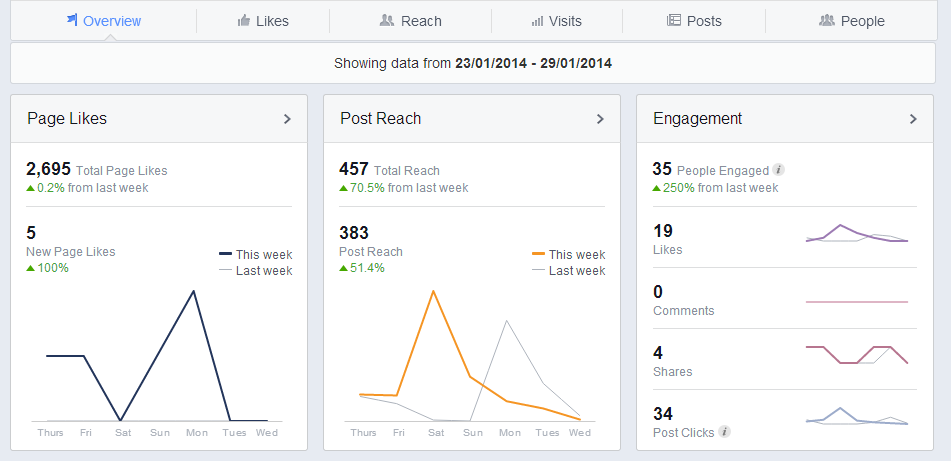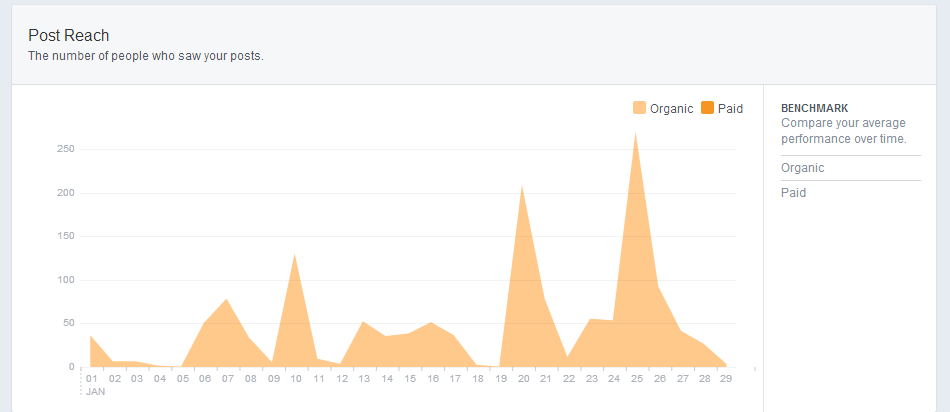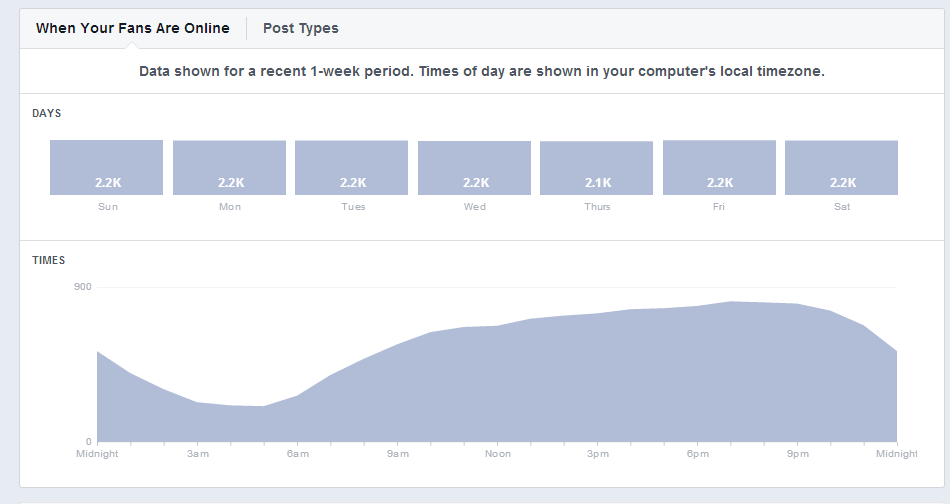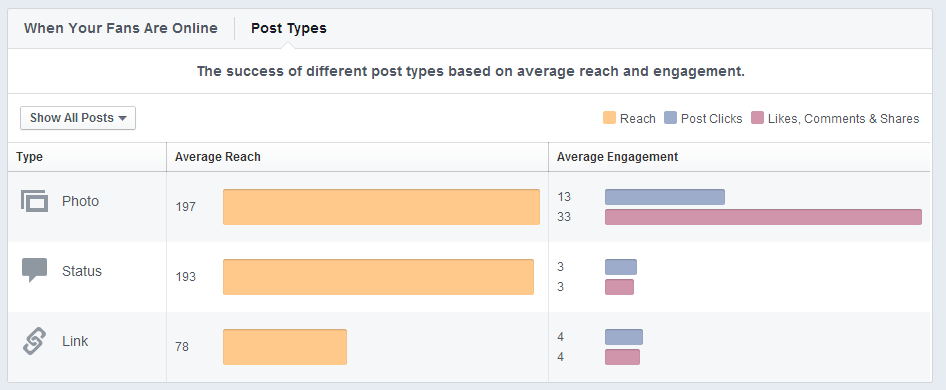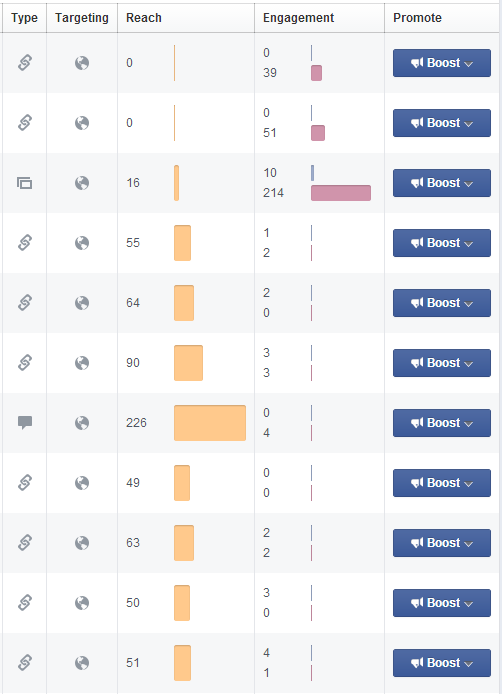You have a Facebook strategy set in place and are posting regularly. How can you be sure your strategy is working?
The best answer is to look at your Facebook page’s insights. Sounds simple, right? It can be, but first you need to know what your insights mean and how to use that information. Here are some of the most useful Facebook metrics you should look at, what they mean, and some examples of what to do with them.
A quick note: if you have your organization’s Facebook set up as a personal Facebook profile and not a Facebook page, you won’t be able to see these insights. If you have to send friend requests and approve friends, you’re working with a Facebook profile. It’s not a great setup for nonprofits, and setting up a real Facebook page would be much more useful to you!
Onto the good stuff. Here are a few insights that can help you make great Facebook posts.
Overview:
This is the first thing you’ll see when you go into the insights area of your Facebook page. Facebook’s Overview condenses all of your page’s data in one easy-to-digest area. You can see how many likes you’ve gotten in the past week, how many people your posts have reached, and how many people are interacting with your content.
Reach:
When you click over to the “Reach” tab, you’ll see a handy graph that charts your reach for the past few weeks. Keeping track of your reach is particularly useful in determining what kind of posts you make and when you publish them. This graph, for example, shows that posts made on January 25 and 26 had a particularly good reach. If you pay to boost or sponsor posts, you’ll see an additional layer on the graph that shows the success of those posts.
Below the Post Reach graph, you’ll find this beauty:
The Likes, Comments and Shares graph goes into a little more detail about the success of each post. Your overall reach has a lot to do with how many people engage with your post; the more engagement a post gets, the more likely it is to be seen by other people. In this particular example, the posts that had the greatest reach on January 25 and 26 gathered lots of likes. Those likes helped boost the visibility that we saw in the first graph. This information is especially useful when one reviews the successful posts and figures out what made them so successful.
Posts:
The Posts area of your insights breaks down your posts’ success even further. The first thing you’ll see on this page is a graph that details when your fans are online. That graph looks like this:
Knowing what time your fans are actually on Facebook is important when you’re deciding when to post. This page’s Facebook fans are regularly online from 12:00 p.m. to about 10:00 p.m. Activity rapidly falls off after midnight and doesn’t really pick back up until 9:00 a.m. or so. This page’s administrator should try to post when they have lots of users online.
If you click on the Post Types tab next to this graph, you’ll see another graph that looks like this:
This one is particularly useful because it breaks down the average success for different kinds of posts. This page, for example, has the best reach and engagement when they post photos. Text statuses get a much higher reach than posts containing outside links, but links get slightly more engagement. When you combine this information, it gives you a good idea of how successful different kinds of posts will be. For this page, photo-based updates that are posted in the afternoon and evening will probably be most successful.
If you really want to dig into past posts to look for patterns and trends, look below those two graphs and the All Posts Published statistics. It looks like this:
This area of Facebook’s insights shows all of the posts you’ve made, the types of posts they were, their reach, and how people engaged with each post. This is a goldmine of information! You can also sort the information in this area by different types of engagement, reach, type, etc. to really nail down what posts resonate with your audience.
Facebook’s insights are full of information; this is just a few examples of the ways insights can help you with your posting strategy. If you take a little while each week to review your posts and their success, you’ll be able to make informed decisions about how to manage your organization’s page.
